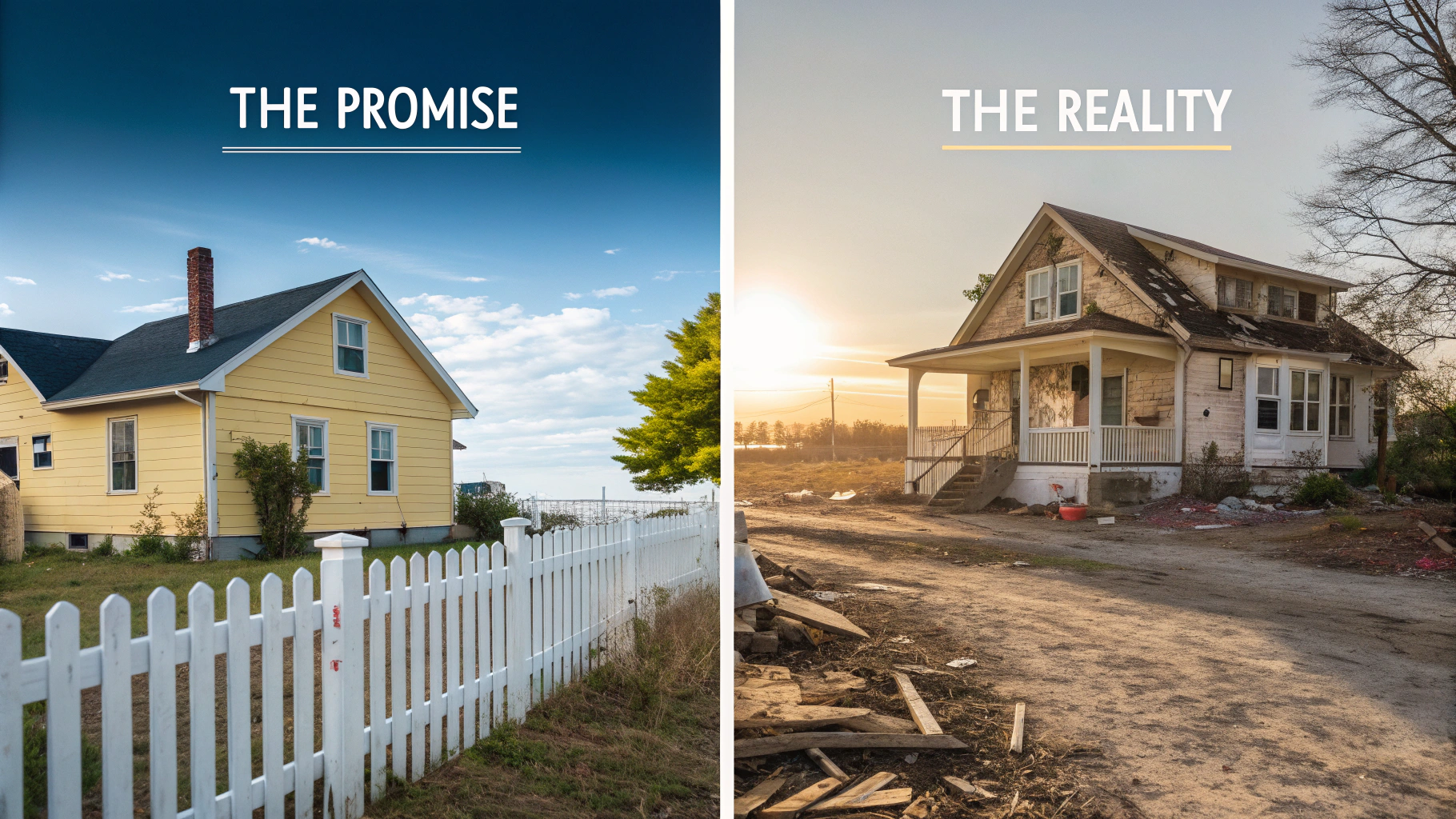Schedule Your Free Consultation

In today’s digital world, the promise is tantalizing: build a professional website in minutes without any coding knowledge. Platforms like Wix, Shopify, and Squarespace have democratized web development, making it accessible to everyone. But beneath the glossy marketing and intuitive interfaces lies a more complex reality. For businesses serious about growth, credibility, and long-term success, DIY website builders often fall short of delivering the finesse and functionality that professional development provides.




DIY website builders market themselves as the great equalizer—the solution that puts design power in your hands. The pitch is simple: fast, affordable, and you don’t need to be tech-savvy. And to a point, they deliver on that promise. You can absolutely launch a website in hours, not weeks.
But here’s the catch: launching a website is not the same as building one that works for your business.
According to research, 57% of users won’t engage with a website that is poorly designed or unattractive. While DIY platforms offer templates that may look acceptable at first glance, they rarely deliver the strategic, custom experience that converts visitors into customers. The result is a site that exists online but fails to drive meaningful business results.

DIY website builders operate within rigid frameworks. You’re confined to their templates, their color schemes, their layout options, and their feature sets. Want something unique? Too bad—you can only work within their ecosystem or hire an expensive developer.
This limitation has real consequences. When your site looks like hundreds of others built on the same platform, it communicates one message: you’re generic. Your competitors who invested in custom design immediately stand out. In competitive markets, this difference can be the deciding factor for potential clients.
Moreover, if you want to implement a feature that the platform doesn’t offer, you have two options: pay extra for add-ons (which pile up quickly) or simply accept that your vision is unachievable within that platform.

When you start small, DIY platforms seem perfect. But as your business grows, the cracks appear—literally.
DIY websites are often hosted on shared servers alongside hundreds of other sites. This shared environment means your page load times depend on what everyone else is doing. When your site slows down, so do your conversion rates. Research shows that 47% of users won’t wait longer than 2 seconds for a page to load. A slow DIY site isn’t just inconvenient—it’s a business liability.
Additionally, as you add features, products, or content, many DIY platforms struggle to keep up. Scaling requires reworking significant portions of your site or migrating to a new platform entirely—a costly and time-consuming process that can damage your brand continuity and SEO rankings.

A beautiful website no one can find is worthless.
DIY platforms offer basic SEO tools, but effective optimization requires expertise and strategic planning. Most DIY site owners make critical mistakes:
Many DIY platform providers deliberately restrict access to advanced SEO settings, claiming this keeps things “simple.” In reality, it means your site can’t compete with professionally optimized websites. You’ll be invisible where it matters most—in Google search results.

Here’s something many DIY builders don’t emphasize: you don’t really own your website.
The templates, design elements, and infrastructure belong to the platform. If you ever want to migrate to another system or upgrade beyond what the builder allows, you’re locked in. Exporting your content is a manual, time-consuming nightmare. Want to change platforms? Start over from scratch.
This vendor lock-in creates long-term risk. If the platform changes its pricing, shuts down features you depend on, or simply discontinues service, your website could disappear—or require a complete rebuild. It’s a precarious position for businesses that depend on their online presence.

Many DIY sites look decent. The problem isn’t appearance—it’s performance.
A site might be “pretty” but fail to generate bookings, leads, or sales. This happens because DIY builders prioritize aesthetics over strategy. They don’t:
The result is a site that impresses initially but doesn’t convert. You spend money on traffic, but visitors don’t take action. Your website becomes an expensive brochure, not a revenue generator.

DIY platforms market themselves as affordable, and they are—initially. But the true cost often surprises users:
A “free” or $15/month website can quickly become a $100+ monthly expense. Over five years, that’s $6,000-plus—not counting the opportunity cost of poor conversions or the time you’ve spent learning and maintaining the platform.
Meanwhile, a professionally designed website with proper SEO, conversion optimization, and ongoing support often delivers better ROI through increased leads, sales, and brand credibility.
To be fair, DIY builders have their place. If your business has very simple needs—maybe you’re just establishing an online presence with basic contact information—a DIY platform might be sufficient as a starting point.
However, DIY works best when you:
For most businesses, especially those in competitive markets, this checklist is unrealistic. Business owners are busy running their business, not managing website optimization.
This is where professional web design delivers what DIY cannot:
Custom Strategy: Professional designers understand your business goals and target audience. They design specifically for your market, not a generic template audience.
SEO from Day One: Custom-built sites are optimized for search engines from the ground up. Professional designers know how to structure sites, optimize content, implement technical SEO, and ensure your site ranks for keywords that matter to your business.
Performance & Speed: Professional developers build sites that load fast, perform well, and scale with your growth. No shared server limitations. No performance degradation as you add features.
Conversion Optimization: Professional designers understand user experience (UX) principles. They build sites that guide visitors toward taking action—whether that’s calling, booking, or purchasing.
Integration & Functionality: Need custom features, API integrations, or complex workflows? Professional developers can build anything. You’re not limited to what’s available in an app marketplace.
Ownership: When a professional builds your site on modern infrastructure, you own it. You can move it, modify it, or maintain it however you choose.
Ongoing Support: Many professional designers offer maintenance and support packages, ensuring your site stays secure, fast, and effective long after launch.
Brand Building: A professionally designed site builds credibility. In services like web design, finance, or healthcare, a poorly designed site actually works against you. A great site communicates competence and trustworthiness.
Consider this: if you build a DIY website that generates zero leads, it doesn’t matter how cheap it was to build. The actual cost was the opportunity cost—the business you lost because your site didn’t rank, didn’t convert, and didn’t represent your professionalism.
Compare that to a professionally designed website that:
Even a modest improvement in leads or sales quickly pays for the investment and then generates profit.
The real question isn’t whether you have time to build your site yourself. It’s whether you have the expertise to build it effectively.
Just like plumbing, carpentry, or electrical work, web development is a skilled trade. Sure, you can DIY plumbing with YouTube tutorials. But most people don’t, because the consequences of getting it wrong are expensive. Website design has similar consequences—they’re just slower and less obvious.
You could spend weeks learning Wix, building a site, discovering it doesn’t rank or convert, then learning why, then rebuilding. Or you could hire a professional who knows what works, builds it right the first time, and delivers results.
The time you save goes back to running your business. The expertise you gain is professional-grade, not amateur-learned.
DIY website builders deliver what they promise: a fast, affordable way to get a website online.
But getting online is different from succeeding online.
For businesses that need their website to generate leads, build credibility, rank in Google, and scale with growth, DIY platforms consistently underdeliver. They’re great for getting started, but they’re poor for winning. They’re good for online presence, but they’re inadequate for business growth.
The harsh truth is that DIY web development delivers a DIY result. It looks DIY. It ranks like DIY. It converts like DIY. And it leaves money on the table, every single day.
If your website is critical to your business—and for most companies, it is—the question isn’t whether you can afford professional web design. It’s whether you can afford not to.
If you’re evaluating whether to go DIY or hire a professional, ask yourself:
The answer for most businesses is clear: invest in professional web design. It’s not an expense—it’s an investment that pays dividends through better rankings, more leads, higher conversions, and lasting credibility.
Because at the end of the day, your website isn’t just an online presence. It’s your digital storefront, your first impression, and your most powerful sales tool. It deserves to be built with the expertise and care that only a true professional can provide.